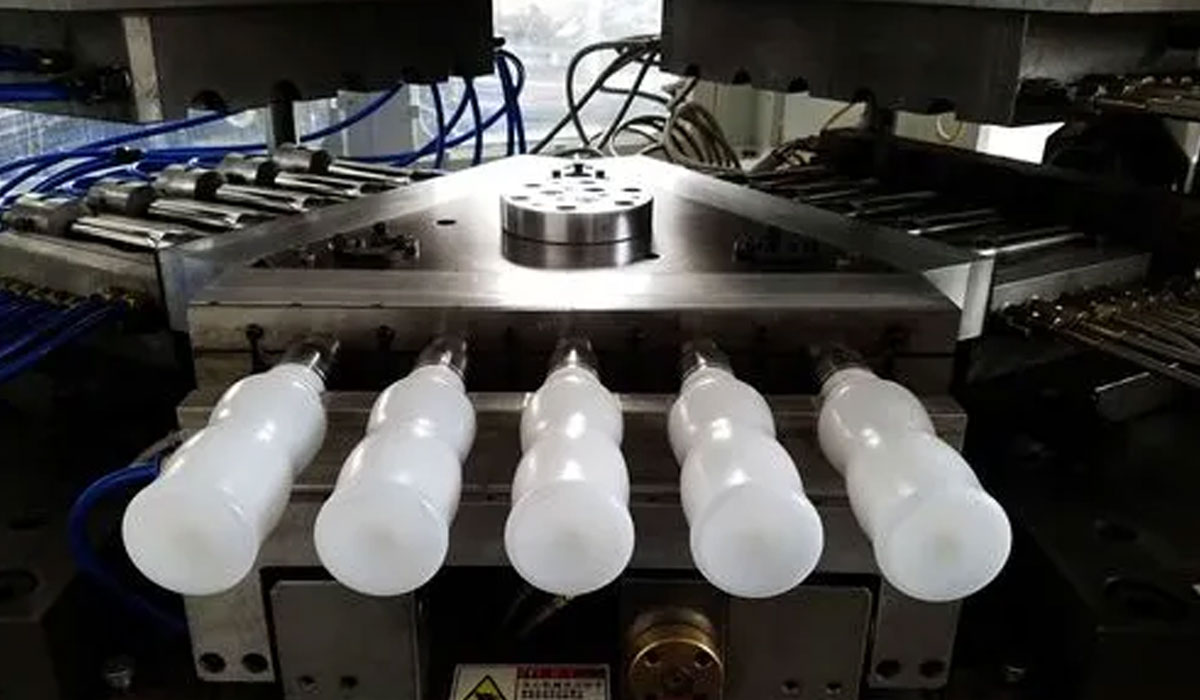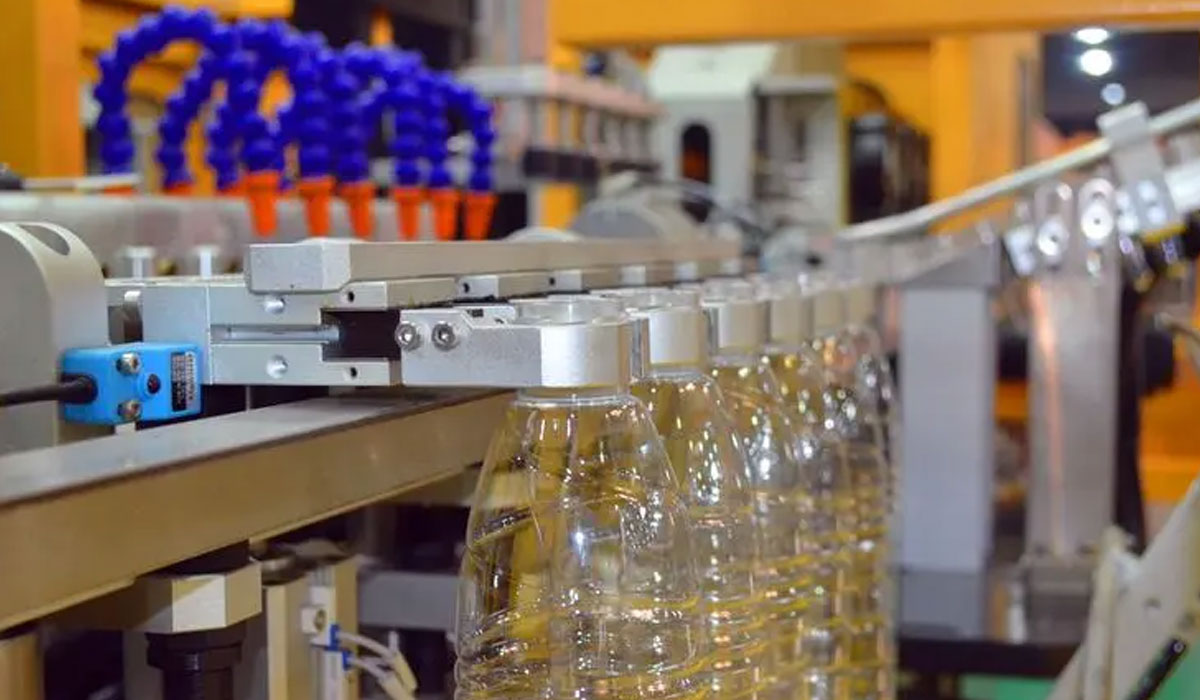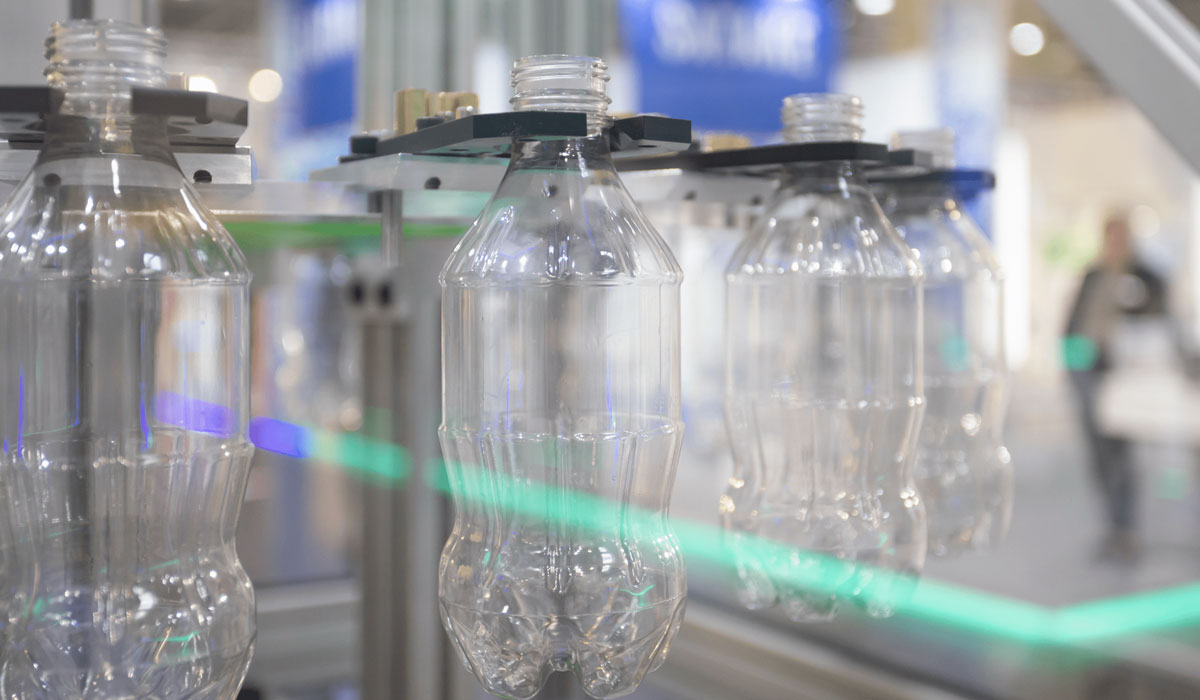PET bottles are one of the most common types of packaging for beverages and liquid products around the world. They are widely used due to their strength, transparency, low weight and recyclability. The manufacturing process of PET bottles consists of several stages, including blank injection, preheating, molding and post-processing. Each step requires precise temperature and processing time, as well as special equipment, including heaters for granulators, heaters for extrusion, and infrared heaters for preheating blanks. In this article, we will look at the PET bottle molding process and the role that heaters play in this process.

#1 Polymer Granulation
Polymer granulation is one of the important steps in the production of PET bottles. This process consists in the processing of primary polymer raw materials into granules of a certain size, which ensures the convenience and efficiency of further processing of the material.
For polymer granulation, specialized granulators are used that are capable of processing raw materials of various shapes and sizes. The granulation process can be either wet or dry. During the wet process, special solvents are used to soften the polymer, resulting in a more homogeneous mass and a better product. The dry granulation process takes place without the use of additional solvents, making it more economical.

Temperature is one of the key parameters of the granulation process. It depends on the type of polymer and can vary from 200 to 300 degrees Celsius. The granulation step may also require drying of the granules to remove excess moisture and prevent bubbles from forming inside the PET bottles.
An important factor is also the quality of the polymer used, which must meet certain standards. If the quality of the polymer is insufficient, defects may appear on the surface of the bottles, such as cracks or dents.
The equipment used for PET granulation includes granulators and dryers. Granulators can be of two types: with and without a vacuum system. Vacuum granulators are typically used for granulating high viscosity polymers such as PET and produce high quality granules without pore formation.
Dryers are used to remove moisture from the polymer material before it is extruded. Dryers can be of various types: flow, rotary, chamber, etc. As a rule, vacuum dryers are used for drying PET. Vacuum drying ensures efficient and fast drying of the material, while maintaining its quality.
Heating elements in granulators and dryers can be different: circular ceramic and micanite heaters, electric heating elements for air, heating plates, etc.
The temperature required for PET granulation is usually around 270-280 degrees Celsius. To dry the material before extrusion, the temperature can be up to 180 degrees Celsius. However, it should be remembered that the temperature regime depends on the specific equipment and the material used, therefore, before starting work, it is necessary to familiarize yourself with the manufacturer’s recommendations.
In general, the polymer granulation process is an important step in the production of PET bottles, which has a significant impact on the quality and characteristics of the finished product.
#2 Casting Blanks
Blow molding is the first step in the PET bottle production process. At this stage, blanks are obtained in the form of cylinders, which will then be used for further blow molding.

1.Injection Molding Machine
An injection molding machine is used for molding blanks. This is a special equipment that allows you to melt a polymer material and pour it into molds, creating blanks of the desired shape and size.
The injection molding machine consists of several parts: a hopper for loading polymer material, a screw barrel, a molding head and a mold.
At the first stage, the polymer material is loaded into the hopper and fed to the screw conveyor. The material is then melted and moved to the molding head where the blanks are cast.
The optimum temperature for PET casting is approximately 280-290 degrees Celsius. To ensure uniform and rapid heating of the material, ring heaters are used. Ceramic and micanite heaters are usually suitable for this purpose, but the choice depends on the specific production conditions and material characteristics. In addition, it is important to ensure the optimum cooling rate in order to avoid deformation and damage to the workpieces. Special types of refrigeration heaters can help with this.
2.Press Forms
Hot runner molds are used for casting PET blanks. This is due to the fact that PET is a thermoplastic polymer and, when cured, tends to shrink, which can lead to deformation of the workpiece when using cold runner molds. Hot runner molds provide a uniform temperature distribution inside the mold and allow you to get a quality product with minimal defects.
After molding, the blanks must be cooled to a temperature at which they can be safely removed from the mould. The quality of the obtained blanks and their further use depend on this.
An important aspect of billet casting is the use of high-quality polymer material and the correct setting of equipment. With the wrong setting or the choice of low-quality material, many problems can arise in the subsequent stages of production.
3.Mold Heaters
Various types of heaters can be used to heat mold parts, depending on process requirements.
- Spiral heaters are one type of heating element that can be used to heat mold runners. Such heaters have a number of advantages, among which are high efficiency of heat transfer, uniform temperature distribution over the surface and very small dimensions. Spiral heaters are installed directly on the gating channel.
- To heat the mold collectors, molded metal heating elements or flexible heaters are installed inside special grooves that are pre-cut into the mold material. Once installed, the heaters are connected to a temperature control system that allows you to adjust the heating temperature depending on the required production parameters.
It is important to note that when using spiral heaters to heat mold runners, precautions must be taken to prevent overheating. To do this, it is important to monitor the temperature and conduct regular checks on the condition of the heating elements and the temperature control system.
#3 The Preheating Of Workpieces
In order to obtain a quality product, the cast blanks must be preheated before the blowing process. To do this, infrared heaters are widely used, which allow you to quickly and evenly heat the workpieces without overheating or deformation.

Infrared heaters use infrared radiation to heat the surface of workpieces. This heating method avoids contact of the heating element with the material and prevents its softening, and also reduces energy consumption. In addition, infrared heaters have fast heating and cooling times, which can significantly increase the throughput of the process.
Infrared heaters are used to preheat cast billets. These heaters can be installed at various stages of the molding process, but are typically used to heat preforms before they are blown into a mould.
Infrared heaters work on the principle of emitting infrared rays. These beams transfer heat directly from the heating source to the surface of the heated material, which allows you to quickly and efficiently heat the workpiece. In addition, infrared heaters can be easily controlled and adjusted, allowing precise control of the heating temperature.
To heat PET blanks, infrared heaters with a wavelength of about 1.2-1.4 microns are used. These heaters can be installed either directly above the blanks or on the side walls of the mold.
The heating temperature depends on the type of material, its thickness and the shape of the workpiece, as well as on the design of the heaters used. Typically, temperatures around 100-120°C are used to heat PET preforms. However, for thicker or complex shapes, the heating temperature may be higher.
With the correct use of infrared heaters, uniform heating of workpieces can be achieved, which increases the quality and strength of the final products. In addition, infrared heaters can reduce the heating time and increase the productivity of the molding process.

#4 Molding
After the preforms have been heated to the desired temperature, they are fed into the blow mold. The blow mold consists of two parts – upper and lower. The upper part contains the blow head which is lowered into the heated preform, and the lower part contains the mold which is pressed against the heated preform from below.
After the preform is placed in the mold, the inflation head begins to penetrate into the preform and inflate it to the desired shape. The blow head contains holes through which compressed air passes, which blows into the workpiece, causing it to inflate and take the shape of the mold.
It is important to control the temperature and pressure inside the preform to avoid deformation or uneven inflation. In addition, the blowing process must be fast enough to avoid cooling the preform and reducing its elasticity.
The role of molding technology in providing a quality and safe product
Molding technology is a key factor in ensuring the high quality and safety of PET bottles. A properly tuned molding process allows you to get bottles with specified parameters, such as dimensions, wall thickness, neck shape, etc.
One of the important aspects of molding technology is the control of temperature and pressure inside the mold during the blowing process. Insufficient pressure or temperature may cause the bottle to deform or become irregular. In addition, if the molding process is not set up correctly, it can lead to defects in the bottle walls such as bubbles, cracks or other inhomogeneities, which can affect the quality and safety of the product that will be packaged in this bottle.
Therefore, it is very important to follow the molding technology in order to ensure the quality and safety of the product. This is achieved by controlling the parameters of the molding process, using quality equipment and materials, as well as regular maintenance and adjustment of equipment. In addition, there are specific standards and quality requirements for the production of PET bottles that must be met by the manufacturer to ensure the safety and quality of the final product.
#5 The Use Of Heating Systems In The Molding Process
Heating systems play a key role in the PET bottle blow molding process. The use of the correct heating system not only provides the necessary temperature for molding, but also affects the quality and safety of products.
One of the most common heating systems is the infrared heater, which allows the blanks to be heated evenly before forming. This technology provides precise temperature control and allows high molding speeds to be achieved.
In addition, various types of ring heaters, including micanite and ceramic, can also be used to ensure high quality products. These heaters can operate over a wide temperature range and provide uniform heating of workpieces.
The right choice of heating systems can also help reduce production cycle times, increase productivity and reduce energy costs.
#6 Conclusion
Thus, the blow molding of PET bottles is a complex process that requires fine tuning of each of its steps. From proper polymer granulation to preform heating and molding, every step plays a decisive role in the quality and safety of the final product.
There are many technologies and technical solutions that allow you to achieve optimal results. Ceramic and micanite ring heaters, infrared and spiral heaters are all indispensable components in the blow molding process.
However, it must be taken into account that each task has its own characteristics, and solutions that are suitable for one may not be suitable for another. It is important to choose the right equipment and technology for a specific task.
The use of modern methods and equipment makes it possible to reduce the time and costs of the molding process, improve the quality and safety of products. Thus, the blow molding of PET bottles is an important process in modern industry and requires continuous improvement and development.
